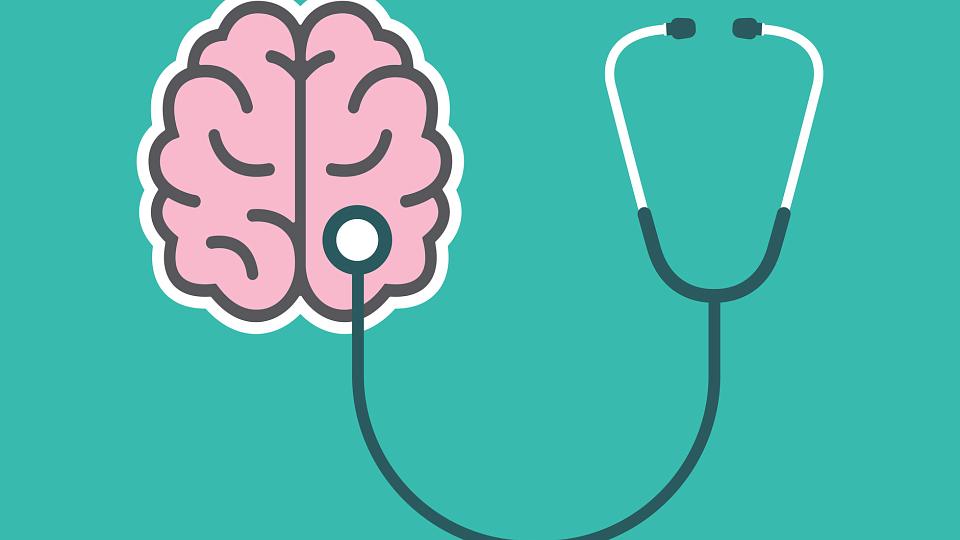
Brain Injury Symptoms
Types of Brain Injuries
More than two million Americans experience a brain injury each year, according to the Centers for Disease Control and Prevention. A brain injury is described as traumatic or non-traumatic depending on how it occurred. Some injuries result in short-term challenges while others can result in permanent disability. Our nationally recognized specialists from our Brain Injury Program can support you every step of the way in your diagnosis, treatment, and recovery.
We treat the following types of brain injuries:
- Traumatic brain injury (TBI)
- Mild traumatic brain injury
- Moderate to severe traumatic brain injury
- Non-traumatic brain injury
- Disorders of consciousness
- Vegetative state
- Minimally conscious state
Traumatic Brain Injury
Most traumatic brain injuries are caused by a fall, car accident, sports, or assault. However, a traumatic brain injury could also be a result of an object penetrating the skull. The impact alters normal brain function and may lead to:
- brain swelling,
- bruising or bleeding,
- and widespread nerve damage.
In most cases, the injury is purely a result of the blow or jolt to the head. However, a traumatic brain injury could also be caused by an outside object that penetrates your skull.
Risk Factors for TBI
Individuals who are most at risk for a traumatic brain injury are:
- males between the ages of 15 and 24,
- children under four years old, and
- adults over 60 years old.
Mild Traumatic Brain Injury
This kind of injury is caused by direct force to the head and leads to short-term impacts on the brain. Most people make a full recovery from this kind of injury after several weeks.
Mild traumatic brain injury symptoms can include:
- loss of consciousness for less than 30 minutes,
- memory problems,
- nausea,
- dizziness,
- headache,
- sleep problems,
- sensitivity to light and sound,
- vision changes, and
- fatigue.
A mild traumatic brain injury can also affect your emotions resulting in:
- mood swings,
- irritability,
- anxiety, and
- depression.
A concussion is also categorized as a mild traumatic brain injury. If you did not lose consciousness, you may still have a concussion.
Moderate to Severe Traumatic Brain Injury
Patients with this kind of brain injury have more severe symptoms and impairments than those with a mild traumatic brain injury. They may also experience greater challenges such as:
- loss of consciousness for more than 30 minutes,
- seizures,
- persistent headaches,
- problems speaking,
- severe confusion or agitation,
- difficulty walking,
- coordination problems,
- weakness/paralysis (not able to move), and
- changes in behavior.
A moderate to severe traumatic brain injury may permanently damage parts of your brain. Your doctor may want to perform imaging tests such as magnetic resonance imaging (MRI) or computed tomography (CT) to detect signs of a brain injury.
Find a Rehabilitation Specialist
Patient Ben Eder's TBI Recovery at Neilsen Rehabilitation
Non-Traumatic Brain Injury
A non-traumatic brain injury can occur as a result of a stroke, reduced oxygen levels, or brain infection.
The causes of a non-traumatic brain injury include:
- virus,
- stroke or brain hemorrhage,
- heart attack,
- hypoxic encephalopathy (caused by oxygen deprivation in the brain),
- brain tumor,
- meningitis,
- drug abuse,
- toxic substances such as lead, and
- hydrocephalus (fluid buildup in the brain).
Disorders of Consciousness
At the Craig H. Neilsen Rehabilitation Hospital, we care for patients in a vegetative or a minimally conscious state. Our treatments for disorders of consciousness are unique to our Brain Injury Program since most other programs do not offer this niche service. Many of these patients have complex medical needs, which our physicians, therapists, nursing staff, and case managers are trained to support.
Disorders of consciousness may have traumatic or non-traumatic causes.The type of injury that is sustained, along with many other factors, can impact your recovery in rehabilitation.
Signs of a Vegetative State vs. a Minimally Conscious State
A vegetative state is when patients have sleep/wake cycles along with some eye opening. They may be able to make some sounds, but are not aware of their environment.
In a minimally conscious state, patients can perform simple commands such as hand squeezing and may have some ability to communicate verbally such as answering ‘yes’ or ‘no.' These behaviors are typically inconsistent.
A patient is considered fully conscious when:
- verbal and physical behaviors become more frequent and consistent and
- he or she begins to show an understanding and awareness of the environment around him or her.
As part of the Disorders of Consciousness Program, our team works to identify certain behaviors and actions that a patient is able to perform. This allows our specialists to determine the level in which a patient is currently functioning. We are then able to assist families with understanding their loved one's prognosis and future recovery.
Treatment
Our doctors and therapists work closely together to coordinate drug interventions and therapies. Our goal is to restore as much of your normal brain function as possible, so that you can join our standard brain injury program and eventually go home.
Our highly-trained providers and staff:
- Identify what stage the patient is in—Diagnosing the stage helps clarify the prognosis and determine how we guide families for the months and years ahead.
- Promote wakefulness and arousal—We use therapies and medications shown to increase brain activity to help move the patient through the stages of consciousness and recover faster.
- Educate families—We involve families early on to help them understand the patient's medical needs and what training may be necessary for them to take care of the patient long-term. Some patients will return home while others may need care in an additional skilled nursing facility.
- Prepare for a patient's return home—We will assess a patient's equipment needs from wheelchairs to shower chairs. We will base our assessment on a patient's recovery and progress.
Brain Injury Symptoms: Long-Term
Though some patients can fully recover from a brain injury, others experience lingering impacts that may require significant life changes. Your recovery will depend on factors such as:
- the circumstances of the injury,
- treatment,
- your overall health, and
- where and how much your brain was affected.
Some long-term symptoms can include:
- memory loss,
- headaches,
- seizures,
- dizziness,
- visual changes,
- fatigue,
- paralysis,
- balance problems,
- reduced language skills, and
- mood swings.

Brain Injury Treatment
Our Brain Injury Program helps guide you through a healing plan tailored to your individual health needs. Among our many treatment options are:
- Augmentative communication devices—This special technology can speak for you or help you run a computer with your eyes.
- Cognitive rehabilitation—This helps improve your memory and decision making skills.
- Community reintegration—This helps you prepare for your return to normal everyday activities such as shopping and going to restaurants,
- An assistive technology center—This allows you to use the latest software and devices to better understand what kind of technology may benefit you at home.
- Family education and training—This helps you and your family learn about the challenges ahead and the available resources and support groups here at University of Utah Health and beyond.
Meet with One of Our Brain Injury Specialists
You will need a referral from your doctor to be admitted to our program, please call our referral line at 801-646-8000. Our referral specialist will work with your current provider to obtain necessary medical records and verify your insurance benefits for coverage.









